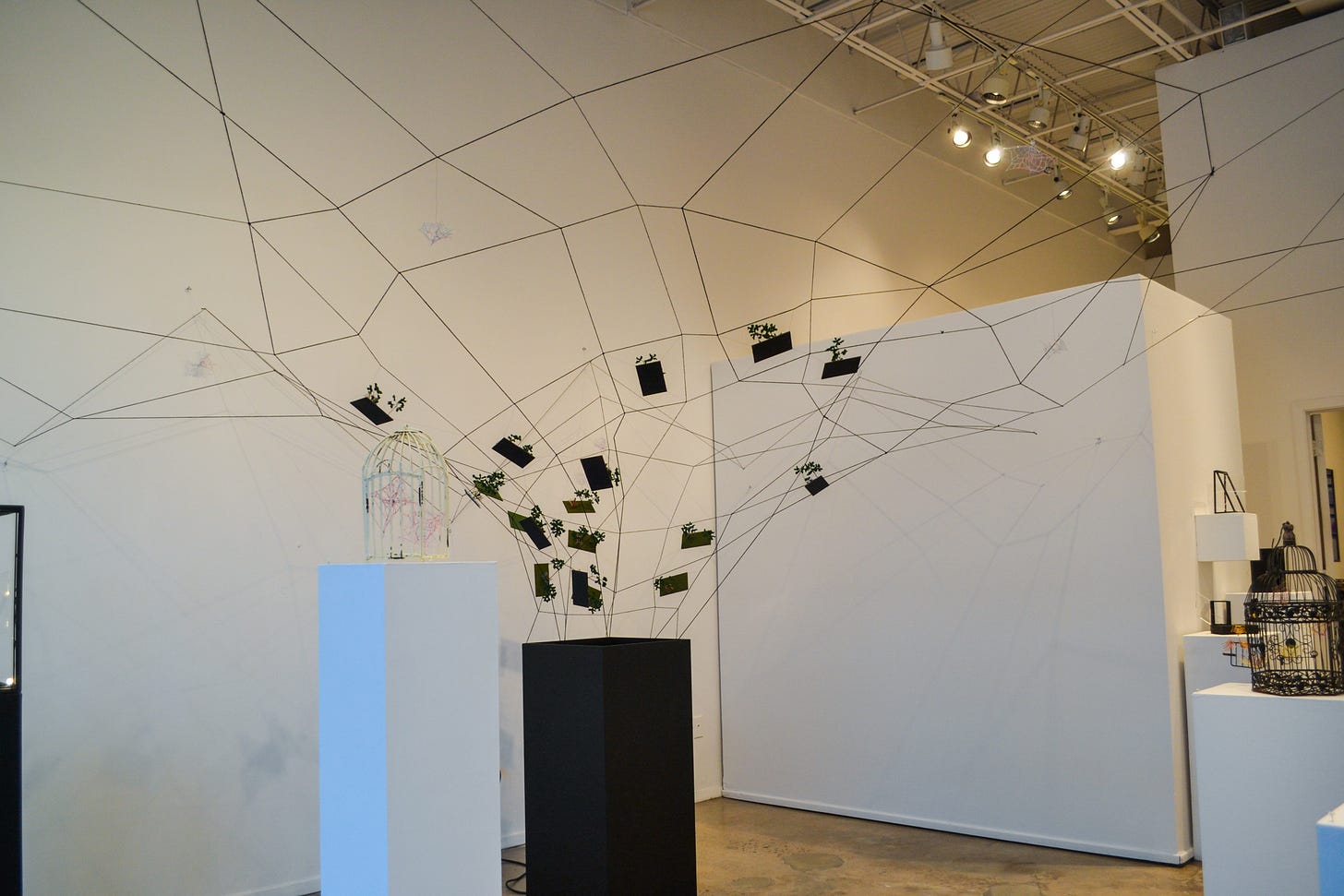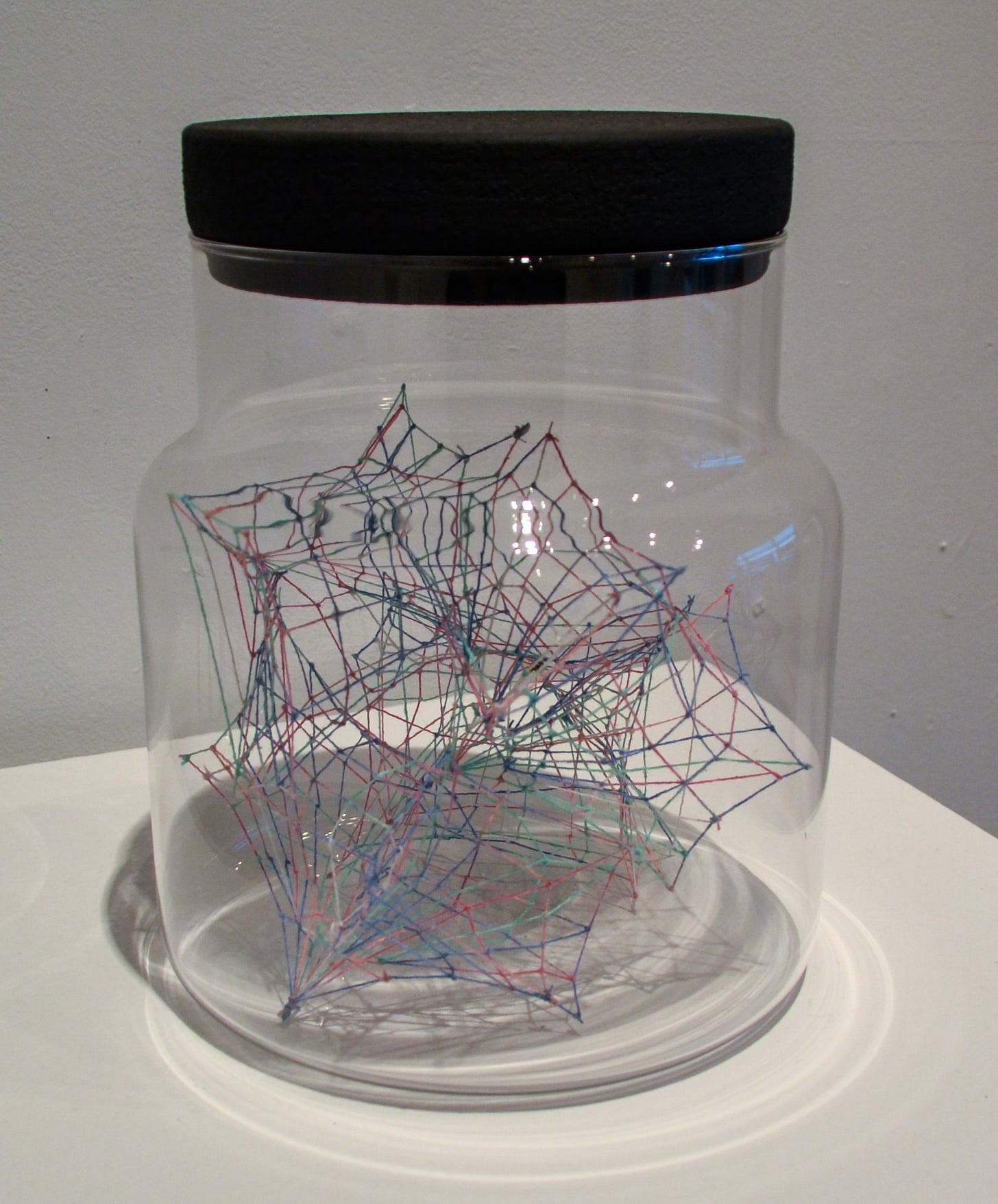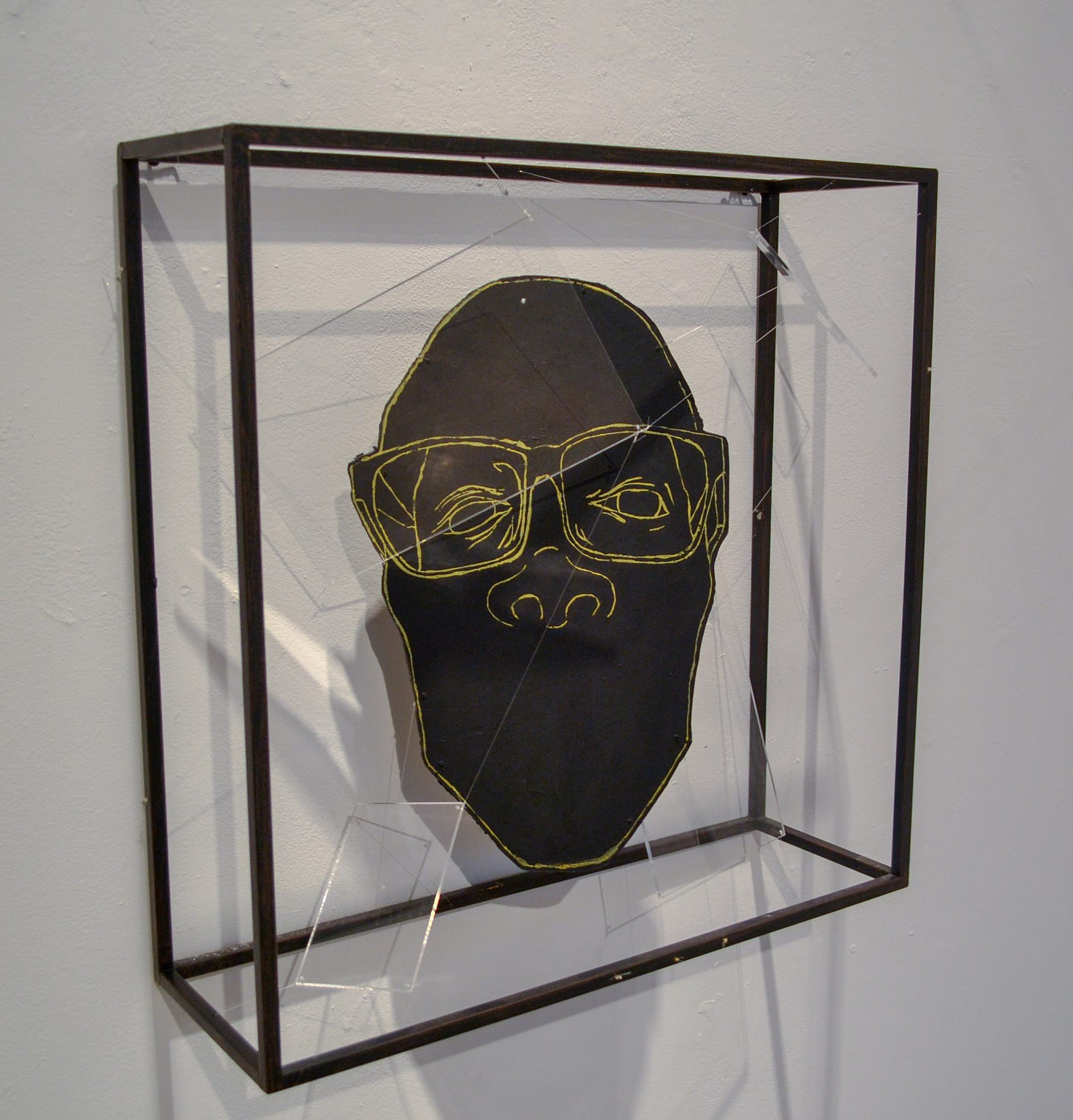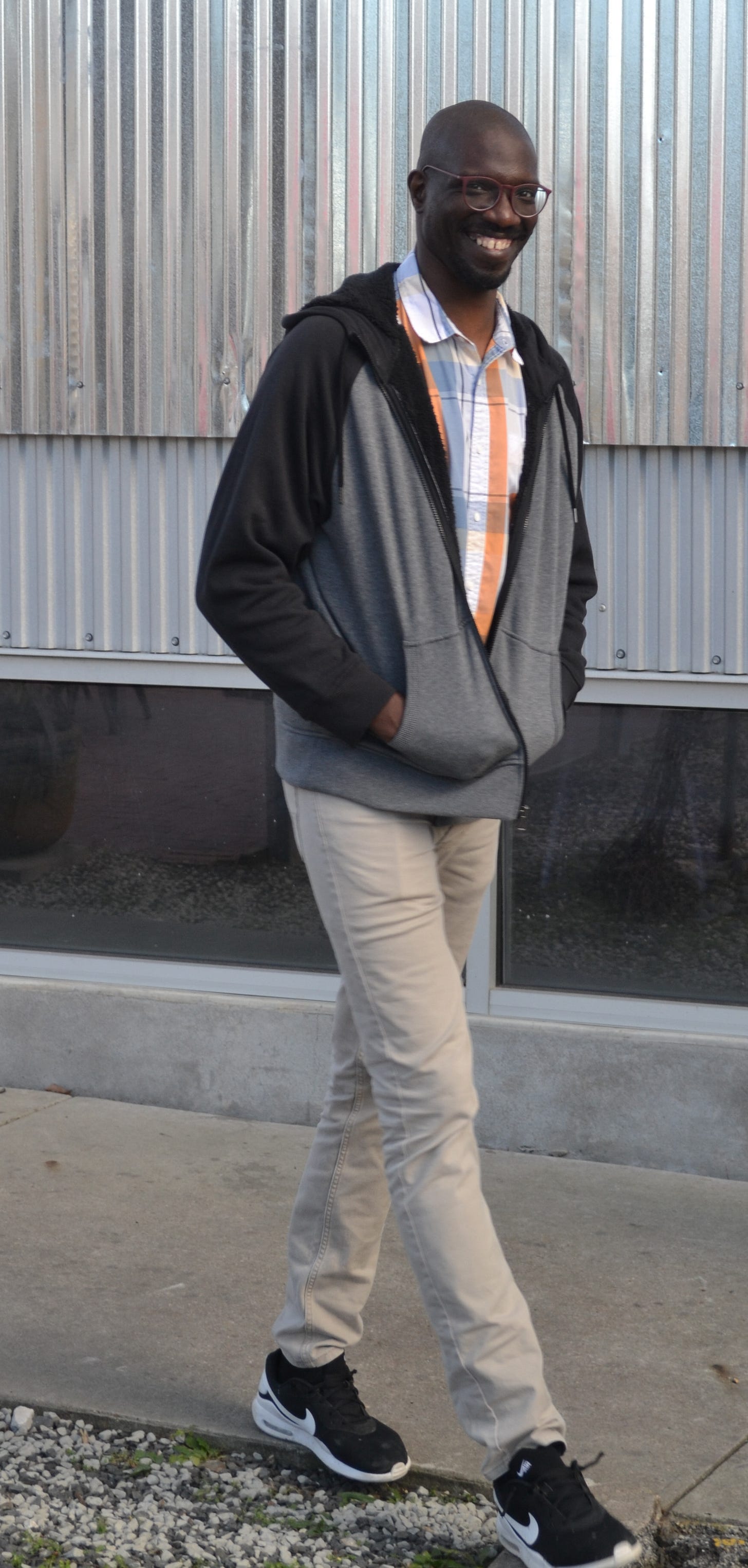I can’t remember when I first saw Ronald L. Jones’ artwork, but I do remember not liking it very much. This was one of his string installations. Jones will stretch string across an open space in a web. They look as if they were created by a giant spider. As a general rule, I like installations, but there are some installations that just seem a little lazy to me. Installations that consist of twigs, for example, or of string. I didn’t understand what Jones was going for with these installations.
Jones’ exhibit at Hooks Epstein—his first in a commercial gallery, as far as I know—helped me to understand his work better. By creating artwork on a small scale that can be sold in a gallery, he has turned his spider-web-like installations into something different. The new work shines a revelatory light on his previous work.
For one thing, Jones has had to figure out a way to create his webs on a much smaller scale. He described his technique in an interview at the gallery, conducted by Pete Gershon.
He has small glass boxes, intended to display collectibles, and builds a web of tiny strings within the display case, then coats them with something that stiffens the thread. At this point, he can cut the web loose. The result is a delicate, three-dimensional web of thread, which can be used in a variety of ways in tiny artworks. One way to think of them are little drawings in space.
For example, he has a series of tiny webs in jars as a series named Specimens. These use small jars with black lids. They look as if they were designed to show these small shapes made of thread. The three-dimensional thread objects how the appearance of something organic—as if Jones were a biologist collecting and displaying the objects of his study. And if these thread objects were living things, Jones arranges it so that one of them, Specimen No. 3, is escaping from its jar.
I don’t think Jones thinks of these thread objects as biological specimens—he appears to have a more metaphorical idea of what they are. They symbolize something. But if you are like me, and you just encounter them in a gallery, they come off as items from Jones’ personal collection.
Other pieces in the show are very directly about blackness and Jones’ own harrowing personal story. Many of the pieces have a title like this: Black (something something). Included among these is a self-portrait, called Black (Life Defined by a Construct). It depicts a screenprint of Jones’ face suspended by strings ad clear plastic rectangles within a metal enclosure.
In 2005, Jones was jailed for manslaughter. In an article in the Houston Chronicle, he said, “I was 19 and dumb and scared.” Black (Life Defined by a Construct) feels autobiographical, but not self-pitying. It is as if he is saying, this is something in my life that happened.
In addition to that group of pieces, he has three where the stiffened thread objects are in bird cages. They include one called An Escape, in which the thread objects are in the process of leaving the cage.
In addition to all of these small pieces, Jones has a larger string piece connected to the walls and ceiling of the gallery called Souls of Black Folks. It is named after the classic book by W.E.B. DuBois. Jones in his gallery talk mentioned that he had read it in prison.
Hanging from the strings are several of the thread objects. Assuming that they are symbolic of black persons’ souls, that colors the meaning of all the smaller pieces in the show. They are poignant, trapped in jars and cages and enclosures. But in the installation, they are free. The installation also includes little plots of model railroad-style plots of land with tiny trees on them, perhaps symbolizing the freedom that property ownership represents.
This show won’t be up very much longer—see it right away if you have the opportunity. But more of Jones work is on view at the Art League, where he built a large string installation on the courtyard there called A Way [A Will]. It will be up through mid-May.
I happened to stop by the day he installed it and snapped this photo.
[Please consider supporting my work by becoming a patron, and you can also support my work by patronizing my online store. And one more way to support what I do here is to buy books through my bookstore. ]














